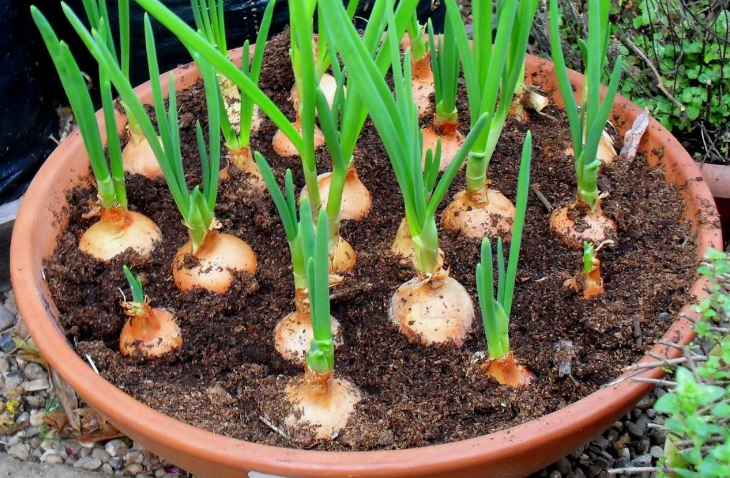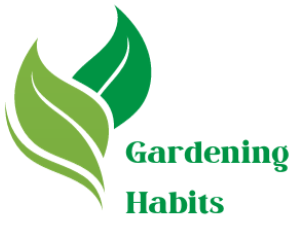10 Hardy Perennial Onions to Grow in Your Vegetable Garden

Perennial onions make a beautiful addition to any vegetable garden. Not only are they easy to prepare, but once they get going you can harvest them at any size, at any time of year.
While most onions are known as annual vegetables, grown from bulb sets in spring or late fall, nearly all types of onion are in fact, perennial alliums. The difference here is the hardiness of these persistent bulbs, which will come back year after year, even through temperatures as low as -40°F.
What are perennial onions?
The most important thing to understand about perennial onions is that the title covers every species, cultivar, and type of onion there is. Onions are bulbous biennial plants, which, after their first year will spread by seed, bulblets, and by bulbs, just like any other layered bulb.
In their first growing year, onions produce small bulbs, packed full of energy, with the sole purpose of producing stunning flowers in their second year. Perennial onions to grow in your vegetable garden After that, they will continue to flower in the garden like any other allium.
What are ‘hardy’ perennial onions?
The only difference between perennial onions and ‘hardy’ perennial onions is their tolerance to cold conditions. Hardy plants are defined by locations, rather than species, perennial onions to grow in your vegetable garden, but as a general rule, they will survive prolonged frosts and temperatures below -20°F.
The alternative is growing tender onions (those that won’t survive cold temperatures) or treating your crop as an annual by harvesting every bulb and cutting off flower heads.
There are advantages and disadvantages of growing hardy perennial onions over those treated as annuals too:
- Tender onions grown from sets each year tend to be bigger, and more flavorful.
- Growing tender onions annually allows for more control of the soil and growing mediums.
- Hardy perennial onions are much easier to cultivate, with little to no care required between planting and harvest.
- Hardy perennial onions work equally well in ornamental borders as they do in raised beds.
How to grow perennial onions
Onion seeds are stunning up close, with a texture like cracked flint, and a deep black outer skin, but not all onions grow that way. Most of the onions usually referred to as perennial onions, or hardy perennial onions, actually develop bulblets instead of seeds.
The incredible adaptation means that, rather than setting seed, the flower spike, or scape, produces miniature bulbs, that instantly begin to sprout in fall when the stem droops into contact with soil. These tree onions, or walking onions, are becoming much more popular, particularly in no dig gardens, or as part of a permaculture growing plan.
The five different groups of hardy perennial onions to grow are listed below, with some simple details on hardiness, and growing methods. Later I’ll share some of my own favorite cultivars from within each family.
The 10 best perennial onion varieties to grow (and how)
1. Wild Onion/Meadow Garlic (Allium canadense)
Wild onions are a perennial weed native to Texas but can be controlled in garden settings. Their flowers, stems, and bulbs are edible.
- When to plant: Plant bulbs in October / sow seeds in early Spring
- How to plant: Sow seeds 1-2” apart, or scatter thinly on prepared soil
- Conditions: Well drained, loose soil
- Hardiness: -40°F (zone 2/3)
Storage: Refrigerate for up to 1 week
2. Geyer’s Onions (Allium geyeri)
Geyer’s onion’s mild flavor makes its leaves and bulbs ideal for use in stews, casseroles and soups, while its flowers make beautiful garnishes to complement these dishes.
- When to plant: Sow seeds after the last frost
- How to plant: Sow seeds in pots, and grow on until bulbs form.
- Conditions: Full sun and well-drained gritty compost
- Hardiness: 0°F (zone 7)
- Storage: Eat fresh
3. Ramp Onions (Allium tricoccum)
Ramps are a gorgeous wildflower to grow at home. They do spread but can be controlled with container planting or raised beds, and the whole bulb is edible, with wide leaves that wilt down into sauces like leek-flavored spinach.
- When to plant: Sow seeds in early fall
- How to plant: Expose seeds to the cold to trigger germination in spring.
- Conditions: Part shade, moist but draining soil
- Hardiness: -40°F (zone 3)
- Storage: Refrigerate for up to 3 weeks
4. Nodding Onion (Allium cernuum)
Nodding onions can be used similarly to chives and spring onions, with small edible bulbs and mildly-flavored stems.
- When to plant: Sow in early spring or late fall
- How to plant: Sow seeds thinly in pots, or prepared seed beds
- Conditions: Full sun-part shade, fertile well-drained soil
- Hardiness: -20°F (zone 4)
- Storage: Refrigerate for up to 3 weeks
5. Prairie Onion (Allium stellatum)
Prairie onions are perfect for permaculture planting, as they self-seed, and spread easily from bulbs, with gorgeous flowers topping off entirely edible plants with a reasonably strong onion flavor in all parts.
- When to plant: Sow seeds in spring or summer, or plant bulbs in fall
- How to plant: Scatter seeds directly into the garden, or start in pots
- Conditions: Full sun, gritty compost
- Hardiness: -40°F (zone 3)
- Storage: Refrigerate for up to 2 weeks

6. Small Yellow Onions (Allium flavum)
The leaves flowers and stems of this stunningly vivid yellow flower are all edible, but the real flavor is in the bulb. The small onion bulb can be used just like regular onions but doesn’t store very well.
- When to plant: Plant bulbs in early spring for summer flowers and fall harvest
- How to plant: Plant in loose soil, 5-10cm apart
- Conditions: Well drained, loose soil, full sun (Mediterranean conditions)
- Hardiness: -20°F (zone 4)
- Storage: Refrigerate for up to 1 week
7. Potato Onions (Allium cepa var. Aggregatum ‘Potato onion’)
Potato onions are the perfect example of a hardy onion, with a bold flavor and a traditional shape. As the bulbs develop, year after year, they form clumps from one root plate, eventually dividing themselves into a dense clump of edible bulbs.
- When to plant: Plant bulbs in early fall
- How to plant: Plant 2-3” apart with space to spread
- Conditions: Rich compost, full sun, good drainage
- Hardiness: -30°F (zone 3/4)
- Storage: Cure, then store in cool dry conditions for 6 months
8. French Red Shallots (Allium oschaninii)
French Red Shallots are among the most desirable varieties available and easy to grow at home. Not only are they delicious and attractive in appearance, but their storage benefits make them highly desirable! What could possibly go wrong?
- When to plant: Plant bulbs in early fall
- How to plant: Plant bulbs 3-4” apart in rows. They will spread and clump.
- Conditions: Rich compost, with good drainage. Full sun
- Hardiness: -20°F (zone 4)
- Storage: Cure, then store in cool dry conditions for 4 months
9. Egyptian Walking Onions (Allium proliferum)
Topsetting onions (also referred to as tree, walking and topsetting onions) have the impressive capability of creating new bulbs on stems at their tips, providing new growth potential in any garden space. While space requirements make these onions challenging to grow well in, their presence makes for an exciting addition.
- When to plant: Plant bulbils in late summer or early fall
- How to plant: Push bulbils into the surface of the soil leaving the tip exposed
- Conditions: Full sun, loose but fertile soil
- Hardiness: -40°F (zone 3)
- Storage: Cure, then store in cool dry conditions for 3-4 months
10. Blue Globe Onions (Allium caeruleum)
Blue globe onions boast stunning, fragrant blooms that might entice you into classifying them with inedible alliums, but every part of this extraordinary garden plant is edible!
- When to plant: Plant bulbs in late fall, before the first frost
- How to plant: Plant bulbs 2-3” deep, and cover with bulb compost
- Conditions: Well drained, dry soil, or very well drained
- Hardiness: -50°F (zone 2)
- Storage: Cure, then store in cool dry conditions for 3-4 months
Takeaway
Perennial onions to grow in your vegetable garden if you’re short of time, or want to experiment with more sustainable gardening practices. They’re perfect for no dig gardens, and fit in beautifully to wild gardens too, with little to no need for fertilizers, soil amendment, or water.
As native species, hardy onions provide wildlife with food sources they rely on. Their diverse selection of flavors makes hardy perennial onions great perennial crops – and don’t be put off by growing something unfamiliar; some hardy perennial varieties may be well-known while others less so; but all should be given a chance.
